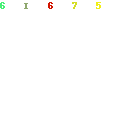Wednesday, February 16, 2005
Mil-dot
As some of you may know, I have been preparing myself, my firearm, and my accompanying equipment for the upcoming Boomershoot. In the progression, I have found myself immersed into the world of long range shooting. Previously, I have shot with hunters, who's fondness for accuracy does not generally exceed 300 yards or so. That's well and good.
As Boomershoot has an outside limit of 800 yards, I've taken an interest in the ins and outs of long range shooting. As such, I bought a ridiculously expensive scope, a book on long range shooting, and a slide rule.
I ordered this product through Dillon, who got it to me within three days (along with a target stand and a shooting mat.) Dillon is one of the better distributors, though their online ordering is still a bit clunky.
What weirded me out when I received the slide rule, was that the wholesaler is in Los Lunas, NM. I live in Albuquerque and Los Lunas is about a 30 minute drive. It had never occurred to me that there might be somebody in the surrounding counties who not only knew what the hell he was talking about, but had created a product so brilliant. Hell, I was in Los Lunas last week.
In any case, while I generally don't endorse products, the NM economy sucks so bad, you should buy this. I will follow up with a full report, once I figure out what the hell I'm doing. Which brings me to the inevitable question of the post.
I seem to understand the concept of the mil-dot reticle. It is not only useful to range-find but also to compensate or adjust accordingly. I read Joe's explanation of the mil-dot as well as others. The fact is, I am not that mathematically inclined.
And this is the point I fall back to. As previously stated, I sucked at Math with the exception of Geometry. However, I always argued with the teacher that you can't base science on imaginary things like points (that have no length, depth, width, area, etc.) and lines (which have no width, so they couldn't possibly exist in the real world.) This pissed people off to no extent and they argued that, even though they were imaginary elements, the entire thing could be applied to real life.
I'm a bit older and wiser and realize that people build bridges based on this kind of voodoo. I've yet to fall through a bridge, so I guess the application is sound.
To get back on point, the science behind the mil-dot makes absolutely no sense to me. However, that does not preclude it being an extremely useful application. My case is that, while I would like to understand how many rads are in a full circle, I don't think it is necessary. I need to be like my fellow pupils and accept certain questionable assumptions as truth in order to make the system work.
Nonetheless, if you information I have not been exposed to, feel free to forward it. And buy New Mexican.
As Boomershoot has an outside limit of 800 yards, I've taken an interest in the ins and outs of long range shooting. As such, I bought a ridiculously expensive scope, a book on long range shooting, and a slide rule.
I ordered this product through Dillon, who got it to me within three days (along with a target stand and a shooting mat.) Dillon is one of the better distributors, though their online ordering is still a bit clunky.
What weirded me out when I received the slide rule, was that the wholesaler is in Los Lunas, NM. I live in Albuquerque and Los Lunas is about a 30 minute drive. It had never occurred to me that there might be somebody in the surrounding counties who not only knew what the hell he was talking about, but had created a product so brilliant. Hell, I was in Los Lunas last week.
In any case, while I generally don't endorse products, the NM economy sucks so bad, you should buy this. I will follow up with a full report, once I figure out what the hell I'm doing. Which brings me to the inevitable question of the post.
I seem to understand the concept of the mil-dot reticle. It is not only useful to range-find but also to compensate or adjust accordingly. I read Joe's explanation of the mil-dot as well as others. The fact is, I am not that mathematically inclined.
And this is the point I fall back to. As previously stated, I sucked at Math with the exception of Geometry. However, I always argued with the teacher that you can't base science on imaginary things like points (that have no length, depth, width, area, etc.) and lines (which have no width, so they couldn't possibly exist in the real world.) This pissed people off to no extent and they argued that, even though they were imaginary elements, the entire thing could be applied to real life.
I'm a bit older and wiser and realize that people build bridges based on this kind of voodoo. I've yet to fall through a bridge, so I guess the application is sound.
To get back on point, the science behind the mil-dot makes absolutely no sense to me. However, that does not preclude it being an extremely useful application. My case is that, while I would like to understand how many rads are in a full circle, I don't think it is necessary. I need to be like my fellow pupils and accept certain questionable assumptions as truth in order to make the system work.
Nonetheless, if you information I have not been exposed to, feel free to forward it. And buy New Mexican.
